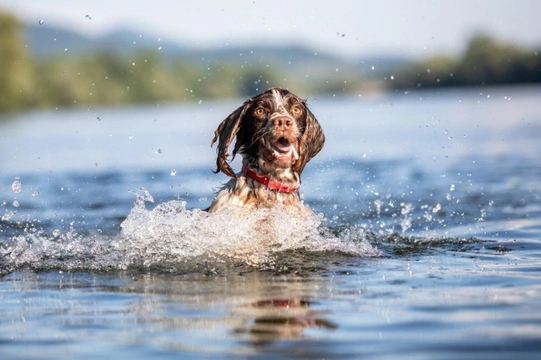
What to check before you let your dog swim in a new spot outdoors
Not all dogs enjoy swimming or can even swim at all, but many dogs have a real affinity with the water, and this is even a typical breed trait in the case of some like the Labrador retriever and the Newfoundland.
In fact, some dogs are so keen to get their paws wet, they’ll go haring off to leap into any water you happen to pass whether you planned for this or not, which naturally is a problem in that it leaves you with a soaking wet dog to get home but more so, because this could even be dangerous.
Whilst swimming is a highly effective form of low-impact exercise for dogs and one that can form a part of the routine for many, letting your dog swim outside is something that needs to be planned and undertaken with caution, particularly when it comes to letting your dog swim in a new place for the first time.
Potential swimming spots for dogs should always be checked out and researched before your dog even sets eyes on them; and this article will advise you on what you need to think about and assess in this respect to keep your dog safe. Read on to learn more.
The cleanliness of the water
First of all water that is filthy is not a good pick for swimming safely, but even water that looks crystal clear could be heavily polluted and pose a big risk to your dog’s health.
Conduct visual checks but also think about things like pesticides running off nearby fields, what discharges into the water, and what info you can find out online. Also, if there don’t seem to be any plants or fish and other wildlife living in and around the water, this is not a good sign!
Wildlife using it as a source of drinking water on the other hand, is a positive indicator and a good start.
The temperature of the water
Water is invariably several degrees cooler than the air, and so it takes a protracted warm spell for water to approach the right temperature for a dog to swim in. Also, even if the water feels warm to your hand, if you put your arm in deeper you may find it chilly, and the deeper the water is, the greater this effect, so be cautious.
Current and undertow
Water sources that have a current or undertow are not usually a good idea for safe dog swimming, as even if they look gentle you cannot tell what is going on under the surface. Avoid such spots unless you know lots of other dog owners whose dogs swim there regularly in safety.
Getting your dog in and vitally, out
Always think about how and where your dog will get out of the water before you let them get in. Most dogs can jump into water from a drop of several feet up, but it will be impossible to get them out the same way.
Bring a dog into and out of the water in the same place; they will head back to the spot they got in at to try to get out. Additionally, assuming a shore looks like a safe place to get out is not guaranteed, as there may be obstructions that prevent your dog getting to it.
Seasonal risks: blue-green algae
Blue-green algae can cause dangerous algae blooms in bodies of water that can pose a serious seasonal hazard to dogs that swim in them. Research this in more detail and check local reports before taking your dog for a swim.
Crowding and other dogs
Knowing that other dogs swim where you plan to take yours is a good sign but also, means you might want to avoid them at busier times. Overcrowding can cause problems in the water in terms of flashpoints and disagreements between dogs, and even make it harder for your dog to get back to shore if they need to get out.
Toys and safety in the water
If you intend to take a toy to throw for your dog in the water, first of all make sure it floats! It may be best to keep toys away if other dogs are present to avoid fights over resources.
Also, don’t throw sticks, as these can cause injuries from sharp edges; and if you throw a toy when your dog is already in the water, make sure there is no risk of hitting your dog with it!
Underwater obstructions
Be cautious of hidden dangers under the water that might injure or tangle your dog up, like discarded shopping trolleys or even things like barbed wire. Once more, research and ask around before you go.
The substrate of the bottom
Your dog needs to walk on the substrate of the pool or other body of water to get in and out, so check what this is; if it is too sharp or boggy they might cut their paws, or not be able to pull their legs free.
Wildlife hazards
Finally, be wary of wildlife! Swans can be very defensive of their young and coud potentially drown a dog that swims too close to a nest, and on beaches, jellyfish on and in the water can be a seasonal danger.
If you’re otherwise happy with your choice of swimming venue for your dog, make this your final check before you let them get in.



